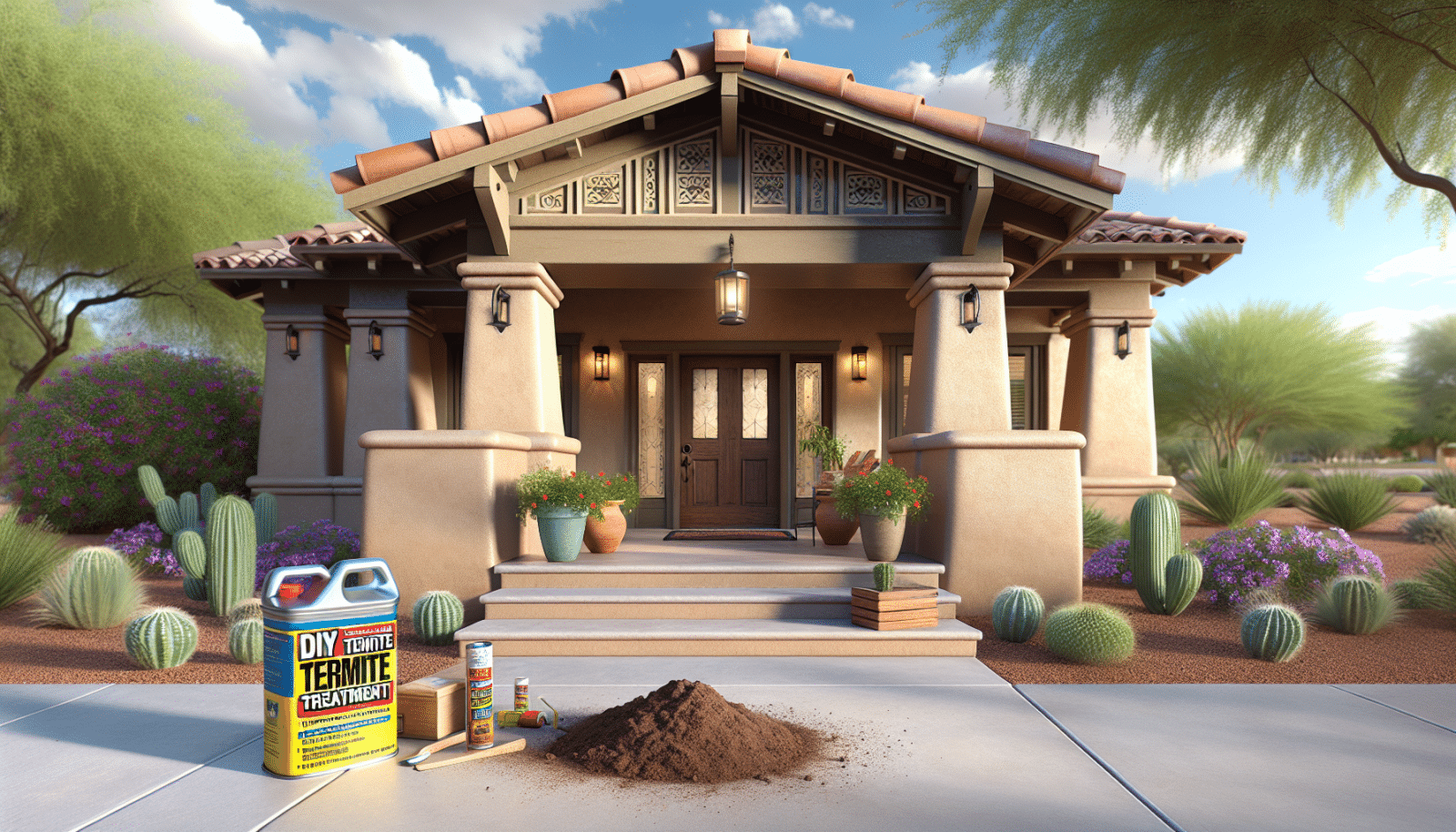Termites are homeowners’ nightmares, silently chomping away at the very foundation of your house. At Arizona Termite Control, we understand that you want to protect your home from these pesky invaders. This article will provide you with practical DIY Termite Treatment tips to safeguard your beautiful abode. Let’s dive in to keep your home termite-free.
Contents
- 1 Understanding Termite Types
- 2 Inspecting Your Property
- 3 Maintaining Wood and Soil Separation
- 4 Using Termite-Resistant Materials
- 5 Applying DIY Termite Treatment Products
- 6 Using Natural Termite Deterrents
- 7 Ensuring Proper Home Ventilation
- 8 Regular Monitoring and Maintenance
- 9 When to Call a Professional
- 10 Conclusion
Understanding Termite Types
Before you initiate any DIY termite Treatment, it’s crucial to identify the type of termites you’re dealing with. Generally, there are three kinds you may encounter: Subterranean, Drywood, and Dampwood termites. Each has distinct characteristics, and knowing which one has invaded your property helps tailor your approach.
Subterranean termites build colonies underground and use mud tubes to access wooden structures. They are often found in damp, soil-rich environments. Drywood termites, on the other hand, prefer dry wood and do not require contact with soil. They create colonies inside wooden structures, causing timber damage from within. Lastly, dampwood termites require high moisture conditions and are usually found in wet or decaying wood.
Discovering which termite type has invaded your space is the first step. You’ll need to adjust your treatment methods according to the specific type, ensuring maximum efficacy with minimal effort.
Inspecting Your Property
A thorough inspection is essential to pinpoint termite activity. You’ll need to examine both the interior and exterior of your home.
Start inside by checking for hollow-sounding wood, mud tubes on walls, and frass (termite droppings). Use a flashlight and a screwdriver to tap and probe suspect areas. Inspect wooden beams, attic spaces, and furniture for signs of termite damage.
Then, move outside. Pay attention to the foundation, windowsills, and areas where wood meets soil. Look for mud tubes and soft, damaged wood. Make sure to check decks, porches, and wooden fences as well.
Maintaining Wood and Soil Separation
One effective way to deter termites is by ensuring there is adequate separation between wood structures and soil. Termites thrive in environments where they can easily move from soil to wood.
Ensure that your firewood, lumber, and other wooden materials are stored at least 18 inches off the ground and a good distance away from your home’s foundation. This prevents termites from easily accessing these materials and transitioning to your home.
Also, consider implementing metal barriers or concrete bases for any wooden structures that have direct ground contact. Keeping these materials dry and elevated will make them less appealing to termites.
Using Termite-Resistant Materials
When making repairs or new installations, choose materials less appealing to termites. Incorporating termite-resistant options can save you from future infestations.
Opt for pressure-treated wood, naturally resistant hardwoods like teak, or composite materials. These options are designed to withstand termite attacks better than untreated wood. Additionally, consider reinforcing vulnerable areas with metallic barriers to physically block termite access.
It’s wise to consult a professional to determine the most effective termite-resistant materials for your specific needs and geographic location.
Applying DIY Termite Treatment Products
Several products on the market can help you combat termites. These treatments should be applied carefully following the manufacturer’s instructions.
- Termite Baits: These traps are placed around your yard to lure termites. Once the termites feed on the bait and take it back to their colony, it can slowly kill the entire colony.
- Liquid Termiticides: These chemicals are applied to the soil around your home, creating a barrier that termites cannot cross.
- Foam Termiticides: These can be applied to wall voids, under slabs, and around foundations. The foam expands and kills termites on contact.
- Essential Oils: Certain oils like orange and neem oil are toxic to termites and can be applied directly to infested wood for a natural solution.
- Borate Wood Treatments: These can be used to treat wood so that it becomes toxic to termites when they try to eat it.
Using Natural Termite Deterrents
For those who prefer eco-friendly solutions, natural termite deterrents are worth considering. They can be an effective part of your overall termite-proofing strategy.
Introducing beneficial nematodes to your soil can attack termite larvae, reducing the population outside your home. Neem oil and orange oil can also be effective when applied to wood, as both oils have termite-toxic properties.
These methods often require multiple applications and should ideally be combined with more traditional treatments for comprehensive protection.
Ensuring Proper Home Ventilation
Good ventilation plays a significant role in making your home less inviting to termites. Proper airflow reduces the moisture levels within your home, which is essential for termite survival.
Ensure your attic, basement, and crawl spaces are well-ventilated. Installing vents and fans can help. Keeping these areas dry and cool will make them less appealing to termites looking for an easy meal.
Regularly check that there are no leaks or damp areas accumulating in these spaces. Prompt repair of any moisture issues is crucial to maintaining an environment that termites find inhospitable.
Regular Monitoring and Maintenance
Consistent vigilance is key when it comes to termite control. Even after initial treatments, regular monitoring and maintenance are essential to keep your home termite-free.
Schedule monthly Inspections to catch early signs of termite activity. Check all vulnerable areas, including wooden structures, soil contact points, and any previously infested sites.
Making minor repairs and adjustments as soon as you notice any issues can prevent a small problem from becoming a significant infestation. Keeping a log of your inspections and treatments will help you track patterns and make informed decisions about future Prevention strategies.
When to Call a Professional
While DIY measures can be effective, knowing when to call in the professionals is crucial. Severe infestations often require expert assessment and treatment.
If you’re seeing significant damage, continuous termite activity, or are unsure of the extent of the infestation, it’s time to seek professional help. Our experts at Arizona Termite Control can provide comprehensive inspections and offer advanced solutions tailored to your specific situation.
Professional treatments often involve advanced technologies and products not available for DIY use, ensuring a more thorough and long-lasting solution.
Conclusion
Protecting your home from termites takes a combination of vigilance, preventive measures, and sometimes professional assistance. If you’re ready for a professional inspection or need further advice, contact Arizona Termite Control by phone # 480-660-3093 or Request a Free Inspection.




